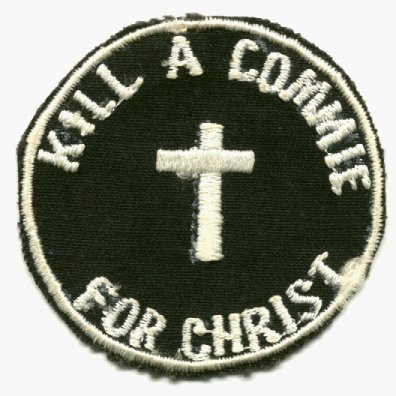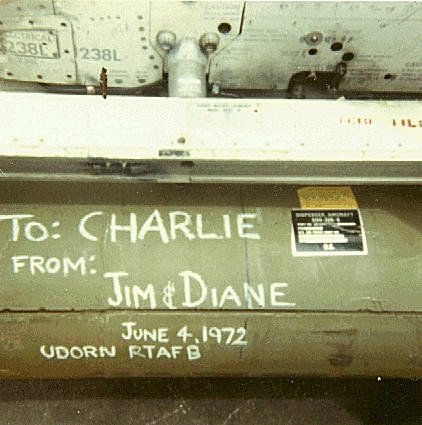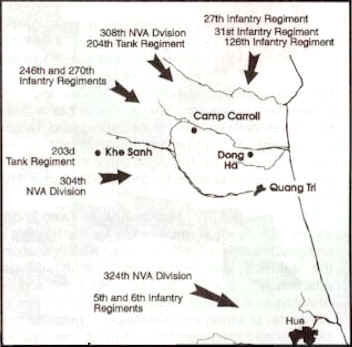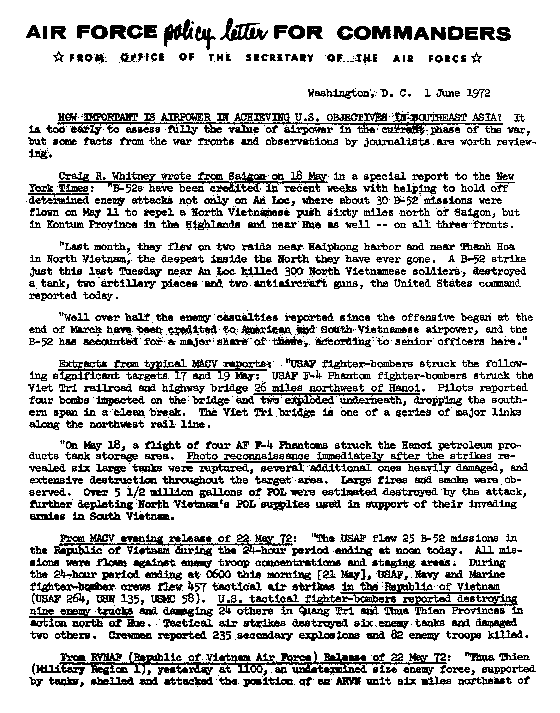
for
BUDDHA

How many of those commies were sent to their BUDDHA ?
The recce photo below is the Dong Ha rail and highway bridges aflame
(April 2, 1972) at the
intersection of Highway 9 and Highway 1 - North Northwest of Quang Tri, RSVN.
Sections of Highway 1, south of Quang Tri City, were known as
the "highway of horrors" by those refugees fleeing Quang Tri City toward Hue
during the North Vietnamese Offensive - The EASTER Offensive of 1972.

Easter Sunday - April 2, 1972 - 1630 hrs -
"The Dong Ha Bridge has been destroyed" - USMC Capt. John Ripley
(as entered in the COVAN G-3 advisor's journal)
The Dong Ha Bridges burned for five days.

DONG HA - QUANG TRI - HUE
Thus the southern spans of the Dong Ha Rail and Highway Bridges, were completely destroyed and dropped into the Cam Lo-Cua Viet River, by two COVANS (U.S. Adviser to Vietnamese Armed Forces), USMC Capt. John W. Ripley and USA Major James E. Smock.
For two hours, these two COVANS single handedly placed 500 lbs of TNT under the spans of these two bridges, while under heavy enemy fire from the approaching NVA armored column (Soviet T-54 and PT-76 tanks) located on the northern banks of the Cam Lo-Cua Viet River.
The Dong Ha Bridges were the only direct route for the advancing NVA armored columns who were attempting to push south toward Quang Tri and Hue City as part of the 3 front 1972 SPRING OFFENSIVE.
This account of the destruction of the Dong Ha Bridges is a summary from the book
"THE EASTER OFFENSIVE" - The Last American Advisors VIETNAM, 1972
by Col. G.H. Turley, USMC (Ret.)
******************************************************
The US military's response, in part, to this NVA Offensive - "LINEBACKER I".
During the Spring of 1972, UDORN RTAFB (Royal Thai Air Force Base)
was home of the USAF's 432 TRW (Tactical Fighter/Reconnaissance Wing),
which was comprised of one RF-4C tactical reconnaissance squadron (14 TRS)
and two F-4D tactical fighter squadrons (13th and 555 TFS).
During the months of April and May 1972, two stateside USAF F-4E Phantom
tactical fighter squadrons were called for temporary duty assignments (TDY)
to UDORN RTAFB, those being:
the 58th TFS (33rd TFW - Eglin AFB, Florida)
and my unit, the 308th TFS (31st TFW - Homestead AFB, Florida).
I, being an airframe repair specialist, worked along with those in the 432 FMS,
sheetmetal shop, working on ALL aircraft on base - flightline, repair docks,
and transit area (except those w/in the confines of the Air America and
Det.1 (56 SOW)-[Special Operations Wing] areas of Udorn RTAFB).
On May 10, 1972 the 58th TFS lost an F-4E Phantom serial #67-0386 to a MIG
PILOT
GIB and WSO (Weapons Sytem Officer)
These (2) - 58th TFS Brothers were declared MIA in 1972, later classified as KIA (Killed In Action).
On June 13, 1972 the 308th TFS lost an F-4E Phantom serial #67-0365 to a MIG
PILOT
GIB and WSO (Weapons Sytem Officer)
On June 27, 1972 the 308th TFS lost an F4E Phantom serial #67-0248 to a MIG
PILOT
GIB and WSO (Weapons Sytem Officer)
These (4) - 308th TFS Brothers became Prisoner Of War (POWs). They were released March 28, 1973 from their North Vietnamese prison camps.
The 307th TFS (31st TFW - Homestead AFB Florida) replaced the 308th
(this rotation was known to many as "SUMMER HELP").
On October 6, 1972 the 307th TFS lost an F4E Phantom serial #69-7573 to a MIG
Both crew members were safely recovered.
On 15 October 1972, the 307th TFS was credited with it's first air victory
in the Vietnam conflict (a MIG-21 shotdown northeast of Hanoi).
The 307th TFS returned to Homestead AFB in November 1972 as the 308th TFS
(back from their earlier TDY at UDORN RTAFB) was once again sent back to
Thailand, this time to UBON RTAFB, where they remained until
the Spring of 1973 -
I, on the other hand, had my volunteer orders to the 366 Combat Support Group -
DANANG, RSVN,
never making it, as those aircraft were dispersed throughout RTAFBs, in Thailand.
(This was part of the "VIETNAMIZATION" of the War
[get the US troops "out of VIETNAM"],
yet WAR "continued to be waged" by USAF units
flying from the Royal THAI Air Force bases in nearby THAILAND
and US Naval aircraft carriers off the coast of Vietnam).
I thus found myself back at UDORN RTAFB as a member of the 432 FMS,
just in time for
and the continued "air war" over LAOS and CAMBODIA
and
more lost aircraft, more lost Brothers, more death and destruction
- the "price" of WAR - the "price" of CONFLICT -
FREEDOM is NOT free !!!
the recce photo above of the Dong Ha rail and highway bridges aflame
(April 2, 1972)
looks as though it was taken by the same recce aircraft
that took the photo as shown in the book
"THE EASTER OFFENSIVE" - The Last American Advisors VIETNAM, 1972
by Col. G.H. Turley, USMC (Ret.)
Thanks TLCB Brother Darrel D.Whitcomb [FAC - Nail/Raven 25]
author of "The Rescue of BAT 21"
for identifying these bridges at our Annual TLCB Reunion.
I had thought this to be the Viet Tri rail and highway bridge as described in
the "Policy Letter for Commanders" below.
(CRS) - TOO MANY COMBAT SORTIES to support, TOO MANY BOMBS,
TOO MANY TARGETS,
TOO MANY LOST BROTHERS - "LINEBACKER I"

Links to 1972 EASTER OFFENSIVE information
"Gerald C. Turley Collection" - Marine Corps Research Center [Marine Corps University]
"The Easter Offensive of 1972: A Failure to Use Intelligence" - by W. R. Baker
"Lessons learned in the savage 1972 Eastertide Offensive paid off
at the Battle of Khafji almost two decades later." - By Al Santoli
excerpt from the Al Santoli link:
[After surviving the 1972 Eastertide Offensive, Walter Boomer climbed his way up the Marine Corps command ladder. On August 15, 1990, he deployed to Saudi Arabia as commanding general of the 100,000-Marine-strong I MEF.]
General Boomer's narrative continues:
"The Gulf War was fought with Marine leadership up front, which is the only place I believe that a leader can fight from....An important lesson of the Vietnam War was the lack of continuity of leadership. Ever since, I have repeatedly stated,
'We killed Marines as a result of changing leaders every six months.' Because just as a commander got his feet on the ground and began to understand a little bit about the terrain and the enemy, the System moved him.
If the war in the Gulf had gone on for a year, I would never have made a change in unit commanders unless a guy collapsed.
"Almost all senior Marine infantry commanders in the Gulf had been advisers to the Vietnamese marines. As the years have gone by, this group has stayed in touch. And our friendships endure. This was an important factor in the teamwork among Marine leadership in the Gulf. The intensity of the 1972 North Vietnamese Easter Offensive is something that none of us will ever forget. The tactical lessons from that stayed in our heads.
We understood the importance of combined arms [coordination between
land forces and close air support]."
end of excerpt
|
"PAGE BACK"
sector "LINEBACKER I" |
"EASY FLYER INDEX"
sector "ALL" - (site index) |
"SECTOR INDEX"
sector "LINEBACKER I" |
"NEXT PAGE"
sector "LINEBACKER I" |
| "TOP OF PAGE" |
| This site is viewed best in NETSCAPE Navigator 3.0 or higher. |